Hello and welcome above ground pool owners to the (sometimes) not-so-wonderful world of above ground pool replacement parts. I do not want to sound like a Debbie Downer but it can be hard to ID and track down parts for your beloved above ground pool. Owners of Vogue and Atlantic models will be the first to tell you that tracking down bottom rims for a 15 year old pool has the fun factor of a root canal.
The similar design and build material of pools provide a list of “Most Wanted” parts likely to be replaced over its lifetime. If you have inherited an above ground pool or are just looking to educate yourself, we will run through a list of the most commonly replaced parts. We also want to give you an idea of the function of each part within the pool design. The components of a pool also vary in material according to the pool grade so we’ll include an explanation of the three main build materials of pools and their relative durability.
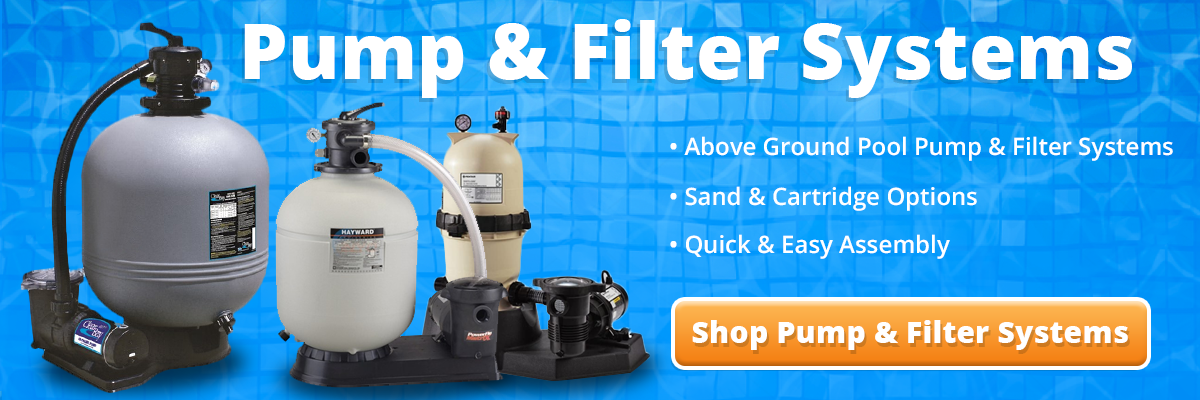
Bottom Rims
A pool’s bottoms rims may be the most commonly replaced part on our list. The rims are the bottom linkage arm between the upright bases. This vital part is likely to deteriorate due to it being steel which is installed in-ground. The rims are exposed to standing water, lawn care chemicals and dirt leading to decay. Why a manufacturer would design a steel part to be pressed into bare ground, likely exposed to constant wet conditions and expect it to last for years, is over my head. It seems more like planned obsolescence than sound design, but I digress.
Obviously these parts are prone to rust and break apart because of metallic oxidation. Though the rims are made of galvanized steel, that will only go so far when![]() faced to constant barrage of the aforementioned elements. I have seen some rims so badly worn that they crumble to dust once they are handled. The good part is that the bottom rims are also available in resin versions but they are always more expensive and will not retrofit to steel bottom rims pools.
faced to constant barrage of the aforementioned elements. I have seen some rims so badly worn that they crumble to dust once they are handled. The good part is that the bottom rims are also available in resin versions but they are always more expensive and will not retrofit to steel bottom rims pools.
So you may ask, why are bottoms rims so important to my pool? As usual, great question. The bottoms rims are the channel guide in which the steel wall sits. This channel helps provides shape for the pool as well has a sturdy foundation for the wall. Without the rims the wall has a likelihood of bowing, leading to a possible wall failure. Needless to say, wall failure is the very last thing you want unless you like cleaning flood damage.
Top Cap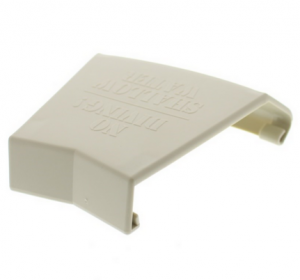
The top cap is a decorative and protective facade cover meant to jacket the upright’s top plate. Among the parts on our list, the top cap is the most likely to simply go missing. The part is generally not screwed to the pool but instead snapped to the top ledge. Because of this they tend to fall off after a few years. After they have fallen off a few times, some pool owners do not bother to reinstall or the family dog has their way with it.
The cap itself is not intrinsically important to the pool’s structural integrity. Its main duty is to protect critical joint parts (i.e. top plates) from the elements and prying hands. Kind of like a vehicle’s hood, a car can drive without it but the uncovered motor is more likely to rust and eventually fail.
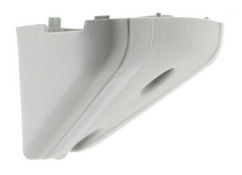 Let us not forget about the Top Cap Supports which act as a buttress and a decorative accessory to the top cap joint. These supports provide a base for the top cap to add stability to the top cap. Their design also provides a fuller molding of the top cap to wall face. Not all pools are designed with top cap supports so do not panic if they are not on your pool. Straight and Curved are the two types of top cap supports; oval pools use a combination of both while round pools strictly the curved style.
Let us not forget about the Top Cap Supports which act as a buttress and a decorative accessory to the top cap joint. These supports provide a base for the top cap to add stability to the top cap. Their design also provides a fuller molding of the top cap to wall face. Not all pools are designed with top cap supports so do not panic if they are not on your pool. Straight and Curved are the two types of top cap supports; oval pools use a combination of both while round pools strictly the curved style.

Top Ledge
Also known as that thing your kids jump off of into the pool (by the way, not recommended.) The top ledge is more than a step for your daredevil 8-year-old; it is part of the safety, structure and aesthetic design of the pool.
The top ledge is a 5 – 8” wide plank made of steel, resin or aluminum that spans the wall’s top edge between uprights. A top cap snaps to each end of the ledge to cover each upright section. The purpose of the ledge is to hide the top rims and wall edge (surprisingly sharp) from swimmers whilst entering and exiting the pool. The ledge also acts as a mooring point for securing pool steps, railings and ladders.
There is no set time for top ledges to last on a pool. A lot has to do with the material the ledge is constructed of; aluminum will last the longest, then resin and steel brings up the rear. Even with weather coating, steel will rust from rigorous use that can scratch it coated surfaces to reach the raw metal. If your pool is salt water or you are considering a switch to it, forget about it. Salt water will oxidize the steel top ledges faster than your wallet can replace them.
Top Plates & Bottom Plates
I would liken the top and bottom plates to that of your knee or elbow in that they are the main joint of each limb of your pool, the upright being the limb. The top and 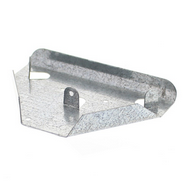 bottom plates are the joining pieces that meet the two wall rims, upright, and top ledge. Each section of wall depends on the sturdiness of this little plate to keep it in line.
bottom plates are the joining pieces that meet the two wall rims, upright, and top ledge. Each section of wall depends on the sturdiness of this little plate to keep it in line.
A chain is only as good as its weakest link and a pool is only as good as its rustiest bottom plate. A big burden is put on these two connecting parts and if it is not in good condition an upright assembly can give way. A failed upright turns an above ground pool into an on-the-ground flood.
Upright
Yes, you guessed it, it keeps the wall upright. We are learning too quickly! Uprights are the vertical posts ringing the pool every 4 – 5 feet. They provide a link between the top and bottom rims set as well as secure the wall. Uprights are usually steel but on the higher end pool models are made of resin and aluminum.
The common demise of these parts are the classic rusting of steel parts but also can break due to stress. Breakage is probably caused by an uneven dispersal of weight on the upright which results from a domino effect of other parts within the pool placing burden on the upright.
The Material
Steel
Galvanized steel was the industry standard in above ground pools for decades. For the most part it has the lion’s share of pools being produced today. It is inexpensive to produce and fabricate into modes making it ideal for entry level and economy pools. The downside of our sturdy friend is that even with weather coating and galvanizing it may rust. When your bottom rims or even walls begin to rust, I would start searching for the factory warranty papers. Steel is the most likely to be replaced of the three pool materials.
Resin
This is a high impact plastic that eliminates the possibility of a rusting pool frame. It is considered a relative “New Kid on the Block” since it has grown in popularity only in the last decade. Initially the cost of production made the price prohibitive to pool owners. Resin is also the preferred choice for homeowners wanting the option of saltwater generators. Though resin is used for all the parts, the walls are fabricated from galvanized, weather coated steel. For example, our Matrix resin pool is all resin is top to bottom except for the steel walls. This is because there is just no beating the reliability and sturdiness of steel in this sheet form.
Because of resin’s higher cost, manufacturers offer it in “hybrid” designs. This mix of resin and steel components keeps the price affordable for the average homeowner. The idea is to use resin on the more vulnerable parts like the top ledge and the bottom rail; while using the less expensive steel on low impact parts. In hybrid pools, steel is usually found in the uprights and its stabilizers An example of our Hybrid pools take a gander at our Heritage, Venture, and Opera.
Aluminum
High rollers only, please. For the discerning prospective pool owner, this is the Cadillac of above ground pools. If you plan on using the pool for a couple decades then this would be the choice for you. The most expensive on the list is also the most durable owing mostly to the natural rust resistance and strength of aircraft grade aluminum.
If your plan is to partially submerge your pool into the ground, aluminum is the only way to go. The extruded metal is the only material strong enough to hold up to both the water pressure pushing out and dirt pushing on the wall. For an example review our Bermuda Aluminum Pool.
For any more information regarding above ground pool consult our above ground pool section, pool comparison video or give our techs a call. We can be reached at 877-372-6038.
If you need to identify a specific pool model, check out our article titled Identify My Above Ground Pool. Or, email us at agparts@inyopools.com

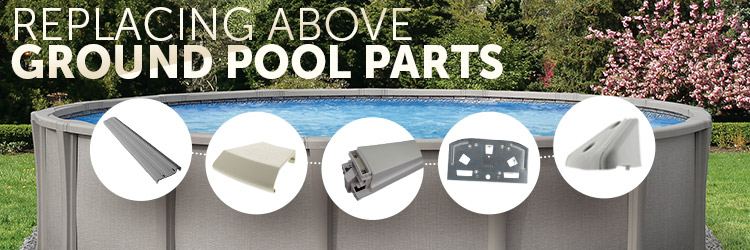
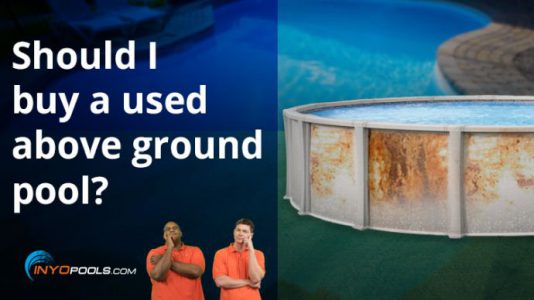
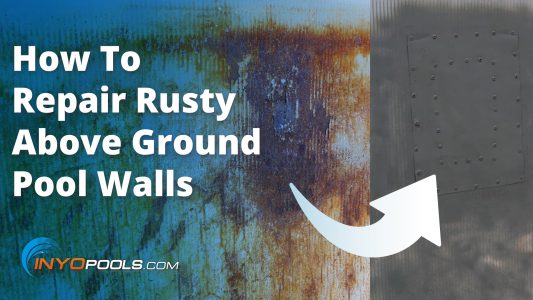
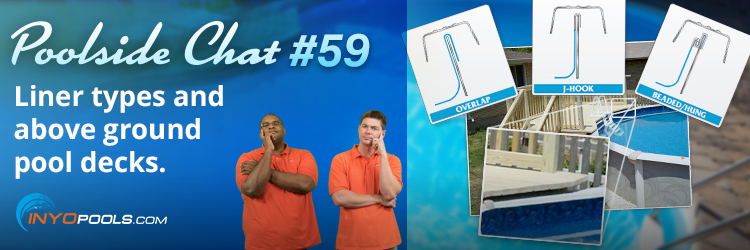
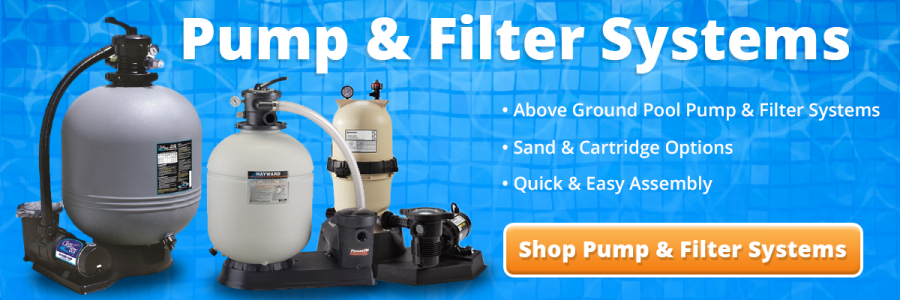






I’m in desperate need of replacing parts of top caps and uprights. Cornelius Alize model. 25ft above ground. Where can I get them before my pool explodes. Thanks
Do I need to empty my 24 foot above ground resin pool if I want to take one upright off to attach the grounding wire to the screws I hid behind this upright? There is no damage it is brand new pool.
18’ x 48” pool. Last winter 2 top frame “ T” pieces and the straight piece that goes between bent. We found replacements.
So how much water needs to be drained to safely replace the 3 pieces. How much water can be left in the pool without it collapsing when I remove the pins? It’s about 3/4 full at the moment
Where can I find t bar replacements that aren’t an arm and a leg when I need all 10/12 replaced?! 😭😭😭
Some pool manufacturers make their replacements parts so expensive that it doesn’t save much to repair the pool. Budget pool mfgrs like Intex tend to boost the price of their parts because they prefer to sell whole pools.
I have a wilbar equinox 21’ 52” pool and I need a couple replacement uprights. However it says out of stock for the season. Can I mix and match any wilbar uprights? If not how do I get ahold of the correct ones. Thanks
No, it is not advisable to mix and match parts. You can try googling the part numbers of the pieces you need to see if any other retailers carry them.
The wind damaged some of my T joints and top rails during set up, and the manufacturer does not have any in stock. I found some from a competitor and wondering if they are interchangable? I have a 15×48 round metal Bestway frame and liner and am looking at a few 15×48 T joints and top rails from Intex, same pool shape and size
Unfortunately, we do not offer replacement parts for the Bestway models. You should contact the company you found that carry these possibly compatible parts to see if they can confirm one way or the other.
The bottom rails on our pool need to be replaced, and we can’t find them in stock anywhere. Is it at all possible to replace all of them with something else if it was the same size?
What do you clean the top ledge with. Our appears to be resin or plastic like. Our pool is rather shaded. The top ledge was originally light gray/off white in color and now is splotchy dirty looking.
Thank you
If the resin parts are faded due to sun damage, there is not much you can do to bring that back. I have heard of some pool owners trying that car plastic renewal spray, but I wouldn’t want that accidentally getting into my pool water. As for basic cleaning, I would go with more organic solutions like Natural Chemistry Clean & Perfect Trigger Spray
My 12′ round Leslie’s above ground pool needs a new liner. The pool is about 12 years old. I measured the side wall from the bottom rail to the top metal coping, and I get 50 1/2″. What size liner do I need?
Is this an overlap, beaded, j-hook or some other connection type? If it is beaded, I suggest measuring from the bead receiver. If it is an overlap or j-hook, I would choose a 52″inch wall liner type.
You can see the various options and liner designs for above ground liners, here: Above Ground Pool Liners
I have been looking for top caps for our pool for about a year, it is older and they have just cracked over time. I have taken the exact part to the local pool store and they said they could not find anything that would work. I have searched even using the serial number on the bottom of them and can not find anything! What could I send you to see if you could help us find something?!
Send pictures of your pool wall pattern, top cap, top rail, and upright to agparts@inyopools.com. Our a/g parts specialist will review the parts, and he should be able to determine if carry your parts.
Thank you!!
Are you still able to identify a pool if I upload pic ?
I need caps for a 24′ above ground pool. SEASIDE II – SHT WALL W/SS PNL – ZAM
I took my above ground pool top rails off to patch some holes in liner. Well a storm came through and a portion of wall tumbled over and is off bottom rail. Pool is surrounded by a deck. The side I did get rail into is full of sand. HELP PLEASE! Do i need bottom back in rail? Or sand I just add more sand and stabilize it. Cant find much on this issue. Will duct tape and sheet metal work?
We have an old pool, been torn down and set back up a couple of times… this time we noticed the metals straps under the bottom of the sand that run across our oblong pool connecting the upright posts, are rusted apart. Cannot find replacements, any DIY ideas?? Thanks
Hi Matthew.
I am a Engineering student tasked to investigate and look at the chemicle make up of pool capping and write a technical report on suitable replacments. I am looking a resin and alternative thermosetting plastics with UV stabilisers added like polycarbonate and Polyvinylidene Fluoride (PVDF) or polyethylene.If you are able to assist me in any way please reply.
Thankyou for your time.
Jason Smith
Your best bet would be to contact a manufacturer directly. Knowing the chemical makeup of plastics is out of my depth.
Where can I buy replacement suction cups for wedding cake above ground pool stairs?
It would depend on the make and model of your wedding cake steps. The few wedding cake-style steps I’ve seen do not require suction cups. If you know the make and model of your steps, you can find a part schematic for it online.
Where can I find replacement top tracks for my pool. The pool is above ground and thirty years old.
Inyo carries a wide range of above ground pool parts, take a look. To find the parts you will need to know the make and model of the pool.
If you need help with identifying the pool, submit a picture of the wall pattern, upright and top cap through this email address so we may search for the parts: upload@inyopools.com